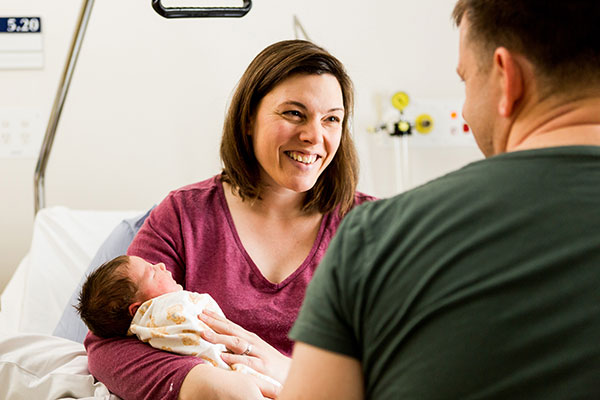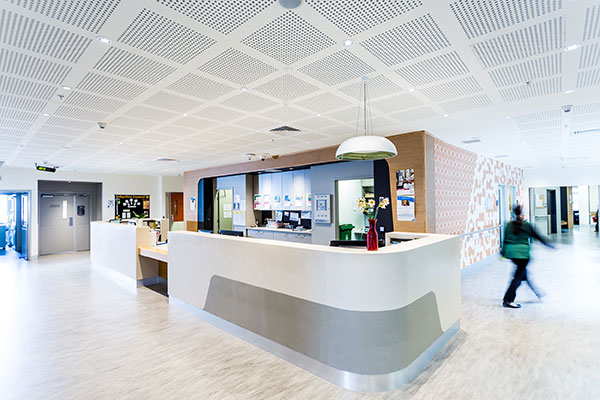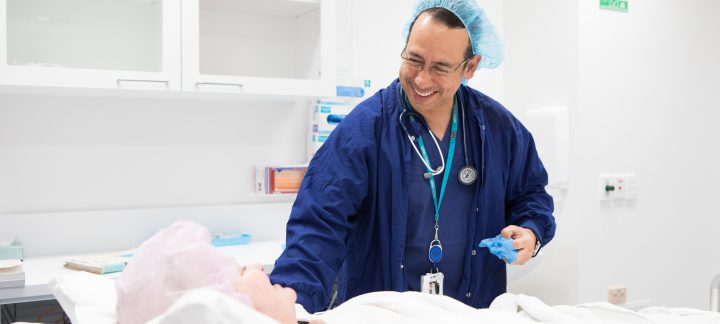The Victorian Healthcare Experience Survey (VHES) is a statewide survey of people’s public healthcare experiences run by the Victorian Department of Health and Human Services. In New South Wales a local and anonymous patient satisfaction survey has been in place at Mercy Health Albury since 2016. The same process was initiated at Mercy Care Centre Young in 2020.
The New South Wales (NSW) patient satisfaction survey consists of 18 statements where patients are asked to respond using a five point Likert scale. This scale allows the patient to express how much they agree or disagree with a particular statement. Patients are advised that the survey gives them an opportunity to anonymously share how their overall experience has been. They are encouraged to have family members assist them in completing the survey. Responses are monitored by department managers who regularly review the themes with their teams. If a significant concern is identified, it is prioritised and escalated to the appropriate staff to be actioned.
For 2020, the average number of patient satisfaction survey responses in NSW was 12.4 respondents per month. Despite the survey identifying some opportunities for improvement, the average score for all 18 questions in 2020 was 4.5/5.
Opportunities for improvement have been noted regarding shared decision making and information regarding costs associated with admission. As such, Mercy Health is trialing multidisciplinary rounding and introduced a new informed financial consent.
In 2020, Mercy Health aligned reporting of our survey responses in NSW with our Victorian health services to enable us to better understand the overall experience of the people for whom we care.
Mercy Hospitals Victoria Ltd receives quarterly and annual reports on our VHES performance, depending on the patient group being surveyed. These allow us to monitor our performance over time and to compare ourselves with our peers and the state average. We share our VHES results with staff, the Executive, the Board and Community Advisory Groups.
In 2019/20, Mercy Health undertook a review on how we monitor and respond to our VHES performance. There are certain elements of care that VHES has identified to have a positive or negative impact on a patient’s overall experience and the discharge process. These are referred to as ‘key aspects of care’ questions, which are the most important to patients. These questions allow us to focus improvements on areas where they are likely to have the greatest positive impact. In 2019/20, we shifted our focus to these key aspects of care.
Improving patient perception of cleanliness
Cleanliness is a key aspect of care in establishing a positive overall experience for our adult inpatients and emergency patients. Our 2019/20 VHES results told us that we needed to review our cleaning processes, schedules and allocation of personal service assistants (PSAs) within the emergency departments (EDs) and inpatient wards at Werribee Mercy Hospital (WMH) and Mercy Hospital for Women (MHW). Our Environmental Services teams worked to increase surveillance and improve signage to indicate how patients, families and carers can escalate concerns of cleanliness within the department. We also provided targeted refresher training for our PSAs.
When we measure our performance, we look at the percentage of people who responded with the highest possible rating. For example, the percentage of people who said that the ward or ED was very clean.
Significant improvements:
- For adult inpatients, our performance improved from 79 per cent in quarter two to 88 per cent in quarter three.
- For our EDs our performance improved from 47 per cent in quarter three to 76 per cent in quarter four.
The target set by the Department of Health and Human Services (DHHS) is 70 per cent. We will continue to monitor this indicator, with particular focus on infection control measures during the coronavirus pandemic.
Positive discharge experiences
Two of the key aspects of care that contribute to a positive discharge experience are information on how patients manage their health at home following discharge and prompt communication with patients’ general practitioners (GPs) after receiving care in hospital.
During 2019/20, patients told us that their discharge experience had not improved. Our average across the four quarters was 76 per cent against the DHHS target of 75 per cent. This figure includes patients’ positive responses to four questions relating to their experience with discharge from hospital.
Despite meeting the DHHS target, we recognised that this was an important area of focus to ensure continuity of care for patients after leaving our health service.
Over the past 12 months, a group of Mercy Health staff have been working on a discharge summary project to design and implement an electronic discharge summary that will be sent directly to patients’ GPs. This process is now in place for those wards that participated in the project. This ensures GPs have up-to-date and relevant information about their patients’ hospital stay and can support them in their continued recovery in the community.
The Mercy Health Communicating for Safety Committee has governance over this process and has formed a working group for ongoing monitoring. There are plans underway to engage with patients, families and carers to better understand what information is important to support managing health care at home.
Care first: Quality Account 2019/20
Last reviewed February 10, 2021.



